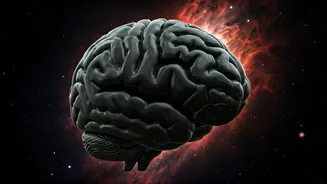Understanding Critical Thinking
Critical thinking involves analyzing information objectively and making reasoned judgments. It's about questioning assumptions, evaluating evidence, and considering
different perspectives before arriving at a conclusion. Rather than blindly accepting information, critical thinkers actively seek out credible sources, identify potential biases, and assess the validity of arguments. This process allows individuals to form well-supported beliefs and make informed decisions, contributing to clearer communication and improved problem-solving skills in various contexts. It's not just about being smart; it's about employing a systematic approach to think smarter.
Questioning Assumptions Daily
One of the most powerful critical thinking techniques is questioning your assumptions. We all have built-in assumptions, often based on past experiences, cultural background, or personal biases. These assumptions can significantly influence how we perceive and interpret information. To combat this, start by identifying the underlying assumptions that shape your thinking on any given topic. Ask yourself 'Why do I believe this?' and 'What evidence supports this belief?' Actively seeking out alternative viewpoints and challenging your own preconceived notions can lead to a deeper understanding of the situation and better-informed decisions. This practice encourages intellectual flexibility and opens up new possibilities, allowing you to avoid hasty judgments and embrace more nuanced perspectives.
Analyzing Information Effectively
Effective information analysis is a core critical thinking skill. In the digital age, we're constantly bombarded with data, so learning to discern credible information is paramount. This starts with evaluating the source. Consider the reputation, expertise, and potential biases of the source before accepting its claims. Look for evidence that supports the claims: facts, data, and supporting arguments. Distinguish facts from opinions. Facts can be verified, while opinions reflect personal feelings or beliefs. Identify any logical fallacies such as misleading information or weak arguments. By carefully scrutinizing the information, you can identify inaccurate or misleading content. Practice active listening: summarize and paraphrase information to confirm your understanding.
Overcoming Cognitive Biases
Cognitive biases are systematic errors in thinking that affect our judgment. Understanding them can greatly enhance critical thinking. One common bias is confirmation bias, where individuals tend to favor information that confirms their existing beliefs. To counter this, make a conscious effort to seek out diverse viewpoints and consider information that challenges your beliefs. Another is the anchoring bias, which causes us to rely too heavily on the first piece of information we receive. To minimize this effect, resist the urge to jump to conclusions based solely on initial data. Be aware of the availability heuristic, where we overestimate the importance of information that is easily accessible. Regularly question your own thought processes and actively seek out information that contradicts your initial assumptions to break free from these biases.
Improving Problem-Solving Skills
Critical thinking is at the heart of effective problem-solving. It helps break down complex problems into manageable parts, identify the root causes, and evaluate potential solutions. A structured approach involves defining the problem clearly, gathering relevant information, and brainstorming various solutions. Next, evaluate each solution based on its feasibility, effectiveness, and potential risks. Consider the consequences of each choice and select the solution that offers the best outcome. Reflect on the entire process, including successes and failures. This reflective practice helps refine your problem-solving skills for future challenges. Regularly applying this method ensures more efficient and insightful resolutions to a wide range of issues.
Making Better Decisions
By integrating critical thinking into your daily life, you will begin making better decisions. This involves weighing the pros and cons of each choice, considering the long-term impact, and seeking diverse opinions. Avoid impulsive reactions and take the time to gather and assess information. This approach is beneficial in both personal and professional contexts. Prioritize understanding before deciding. Question your own biases and assumptions. The capacity to analyze information, evaluate evidence, and think critically can lead to better outcomes. This method also fosters a higher level of self-awareness and leads to a sense of control over your decisions and actions, ultimately resulting in a more fulfilling life.












